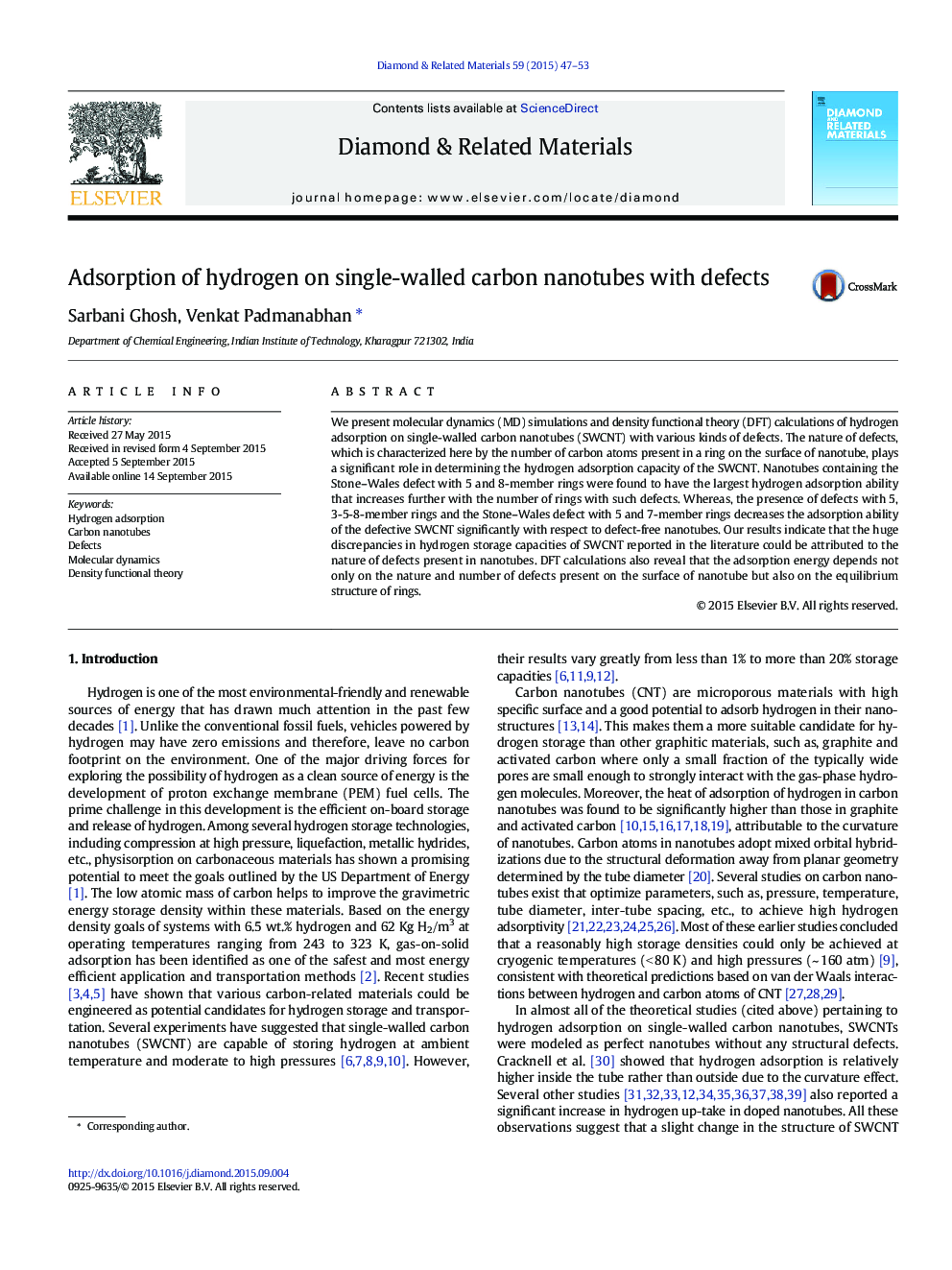| کد مقاله | کد نشریه | سال انتشار | مقاله انگلیسی | نسخه تمام متن |
|---|---|---|---|---|
| 701963 | 1460772 | 2015 | 7 صفحه PDF | دانلود رایگان |
• We study the effect of defects on hydrogen adsorption in carbon nanotubes.
• Hydrogen adsorptivity depends on the type and number of defective rings.
• Combinations of defective rings have a profound impact on the adsorptivity.
• The equilibrium structure of the rings plays an important role in hydrogen adsorption.
We present molecular dynamics (MD) simulations and density functional theory (DFT) calculations of hydrogen adsorption on single-walled carbon nanotubes (SWCNT) with various kinds of defects. The nature of defects, which is characterized here by the number of carbon atoms present in a ring on the surface of nanotube, plays a significant role in determining the hydrogen adsorption capacity of the SWCNT. Nanotubes containing the Stone–Wales defect with 5 and 8-member rings were found to have the largest hydrogen adsorption ability that increases further with the number of rings with such defects. Whereas, the presence of defects with 5, 3-5-8-member rings and the Stone–Wales defect with 5 and 7-member rings decreases the adsorption ability of the defective SWCNT significantly with respect to defect-free nanotubes. Our results indicate that the huge discrepancies in hydrogen storage capacities of SWCNT reported in the literature could be attributed to the nature of defects present in nanotubes. DFT calculations also reveal that the adsorption energy depends not only on the nature and number of defects present on the surface of nanotube but also on the equilibrium structure of rings.
Figure optionsDownload as PowerPoint slide
Journal: Diamond and Related Materials - Volume 59, October 2015, Pages 47–53
